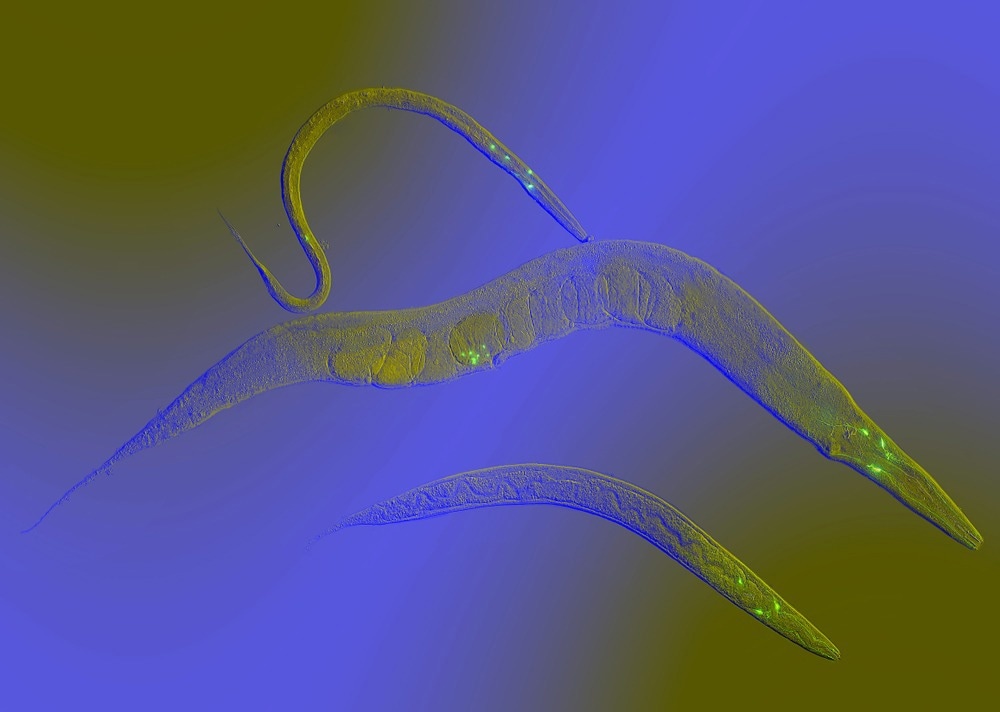In the systemic RNA interference process of C. elegans, the protein SID1 plays a pivotal role by facilitating the transport of exogenous double-stranded RNA into the cytoplasm. Previous research by Chen-Yu Zhang's group demonstrated the absorption of intact plant miRNA from dietary sources through the mammalian digestive system, mediating cross-kingdom gene regulation.

Image Credit: Heiti Paves/Shutterstock.com
Mammalian SID-1 transmembrane family proteins, specifically SIDT1 and SIDT2, have garnered attention for their involvement in the uptake of regulatory exogenous small RNAs like small interfering RNA (siRNA) and plant-derived microRNA (miRNA). Studies using SIDT1-deficient (Sidt1−/−) mouse models revealed that SIDT1 facilitates the cellular uptake of dietary miRNAs in gastric pit cells.
Despite accumulating evidence of SID-1 transmembrane family proteins in nucleic acid uptake, questions persist about the precise structural and molecular mechanisms underlying their facilitation of exogenous small RNA uptake, particularly in low-pH conditions.
In this study, researchers determined the cryo-EM structures of human SIDT1 and SIDT2, revealing their architecture as dimers with remarkable structural congruence. Dimer formation involves contributions from extracellular domains (ECDs) and transmembrane domains (TMDs).
Importantly, the study highlighted the existence of SIDT1 and SIDT2 in dimeric or higher-order oligomeric states, with TMDs crucial for maintaining these assemblies.
Moreover, the ECDs of SIDT1 and SIDT2 efficiently bind to small RNAs in a pH-dependent manner. Under acidic conditions, the ECDs exhibit increased binding affinity to small RNAs, triggering higher-order oligomerization of the ECDs.
The significance of this study lies in unraveling the molecular basis of RNA uptake by SIDT1 and SIDT2. Understanding pH-dependent RNA binding and oligomerization of these proteins provides insights into their functional regulation, particularly in the acidic microenvironments where they predominantly localize.
This work is important as it thoroughly characterizes the structural features of human SIDT1 and SIDT2, revealing their existence as dimers in vitro and their tendency to form dimers or higher-order oligomers in their natural environment.
In addition, under acidic conditions, the extracellular domains (ECDs) of SIDT1 and SIDT2 exhibit efficient binding to small RNAs, suggesting a pH-dependent mechanism for RNA binding and uptake. This discovery challenges previous assertions that SIDT1ECD and SIDT2ECD exclusively bind longer double-stranded RNAs (>100 bp).
The study emphasizes the role of RNA in inducing ECD oligomerization under acidic conditions, providing insight into the potential significance of oligomerization in the RNA uptake process and proposes a model wherein nucleic acid-induced oligomerization could give rise to an RNA transport supercomplex involving other partners under low pH conditions.
SID-1 transmembrane family proteins were first identified as nucleic acid transporters. The ECD regions, however, appear to function as novel nucleic acid binding proteins, raising the hypothesis that these proteins function as membrane-bound RNA binding proteins.”
Chen-Yu Zhang, School of Life Sciences, Nanjing University
“Our study highlights the role of RNA in triggering ECD oligomerization under acidic conditions. Moreover, we propose that the phospholipase activity in the TMD might influence the fluidity of the cell membrane system, shedding light on the potential importance of oligomerization in the process of RNA uptake,” added Xiaoyun Ji.
Source:
Journal reference:
Zheng, L., et al. (2023) Cryo-EM structures of human SID-1 transmembrane family proteins and implications for their low-pH-dependent RNA transport activity. Cell Research. doi.org/10.1038/s41422-023-00893-1.